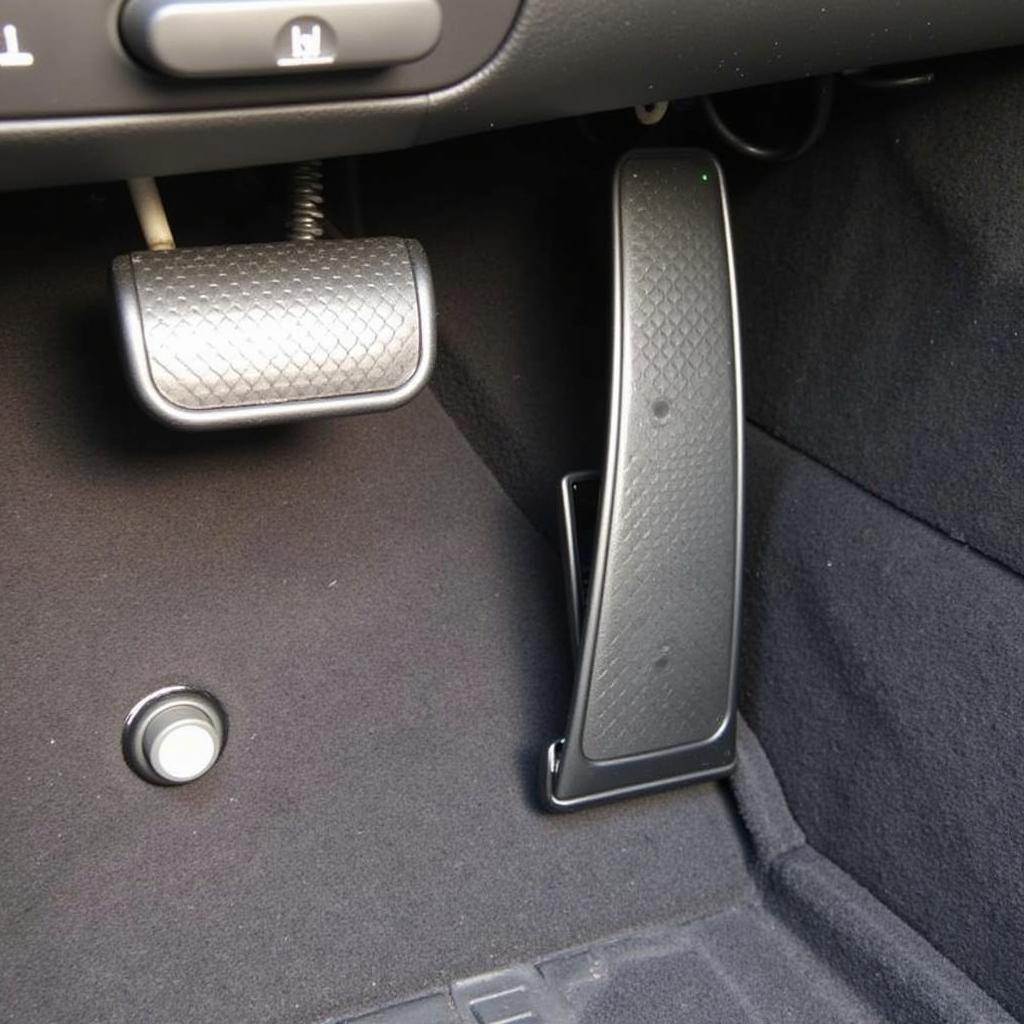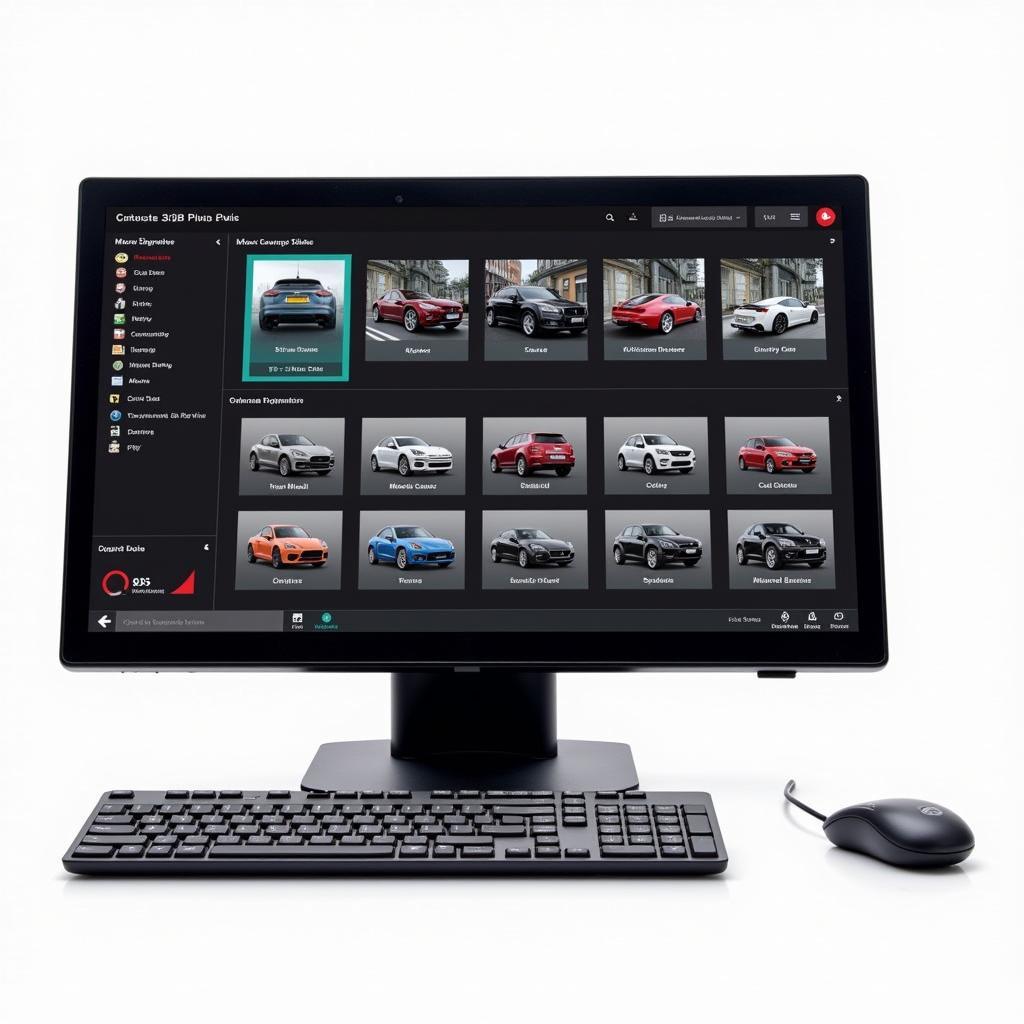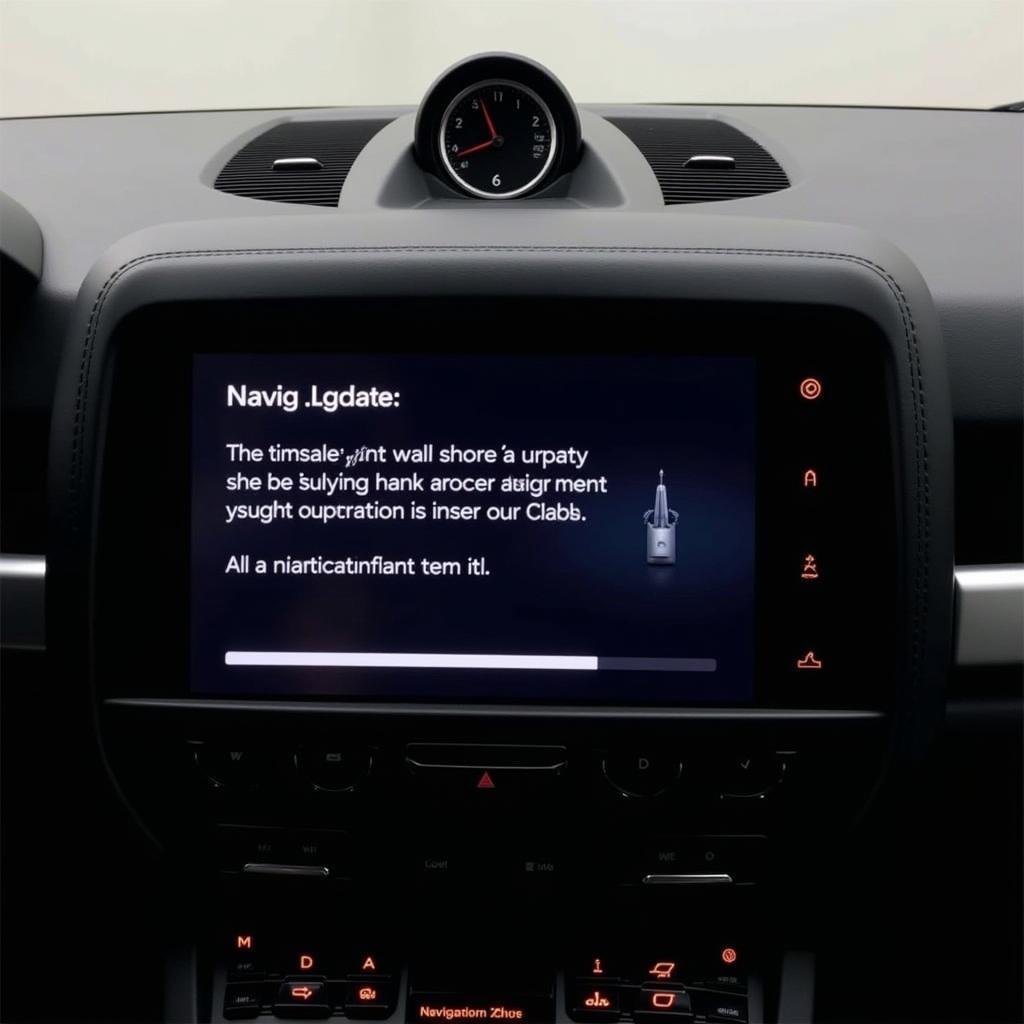Knowing the Porsche Boxster diagnostic plug location is crucial for any owner, mechanic, or DIY enthusiast. This guide will cover everything you need to know about locating, using, and understanding the diagnostic port on your Porsche Boxster.
Decoding the Mysteries of the OBD-II Port on Your Porsche Boxster
The OBD-II (On-Board Diagnostics, Second Generation) port is the gateway to your Porsche Boxster’s internal systems. It allows you to connect a diagnostic scanner to retrieve diagnostic trouble codes (DTCs), monitor real-time data, and perform various tests. Finding its location is the first step in troubleshooting any issues.
Where is the Porsche Boxster Diagnostic Plug Located?
The diagnostic plug on a Porsche Boxster, regardless of the generation (986, 987, 981, or 718), is typically located under the dashboard on the driver’s side. More specifically, it’s usually tucked away in the footwell area, above the pedals. You might need to remove a small panel or trim piece to access it fully. The port itself is a standardized 16-pin female connector.
 Porsche Boxster OBD2 Port Location: Driver Side Footwell
Porsche Boxster OBD2 Port Location: Driver Side Footwell
Why is Knowing the Diagnostic Plug Location Important?
Locating this port is the first step in diagnosing any issues your Porsche Boxster might be experiencing. A diagnostic scanner plugged into the OBD-II port can reveal a wealth of information, from simple sensor malfunctions to more complex electronic control unit (ECU) problems.
Diagnosing Issues with Your Boxster
A check engine light is often the first sign that something is amiss. By connecting a diagnostic scanner to the OBD-II port, you can retrieve the specific trouble codes that triggered the warning light. These codes provide valuable clues for pinpointing the problem area.
Beyond Diagnostics: Programming and Software Updates
The OBD-II port isn’t just for diagnostics. It also plays a critical role in programming and software updates for various vehicle systems. This includes everything from engine control modules to transmission control units and even some comfort and convenience features.
Understanding OBD-II Codes and Their Meanings
OBD-II codes are standardized across most vehicles, including your Porsche Boxster. They consist of a letter and four numbers. The letter indicates the system involved (e.g., “P” for powertrain, “B” for body, “C” for chassis, “U” for network communication). The numbers further specify the nature of the fault.
Common OBD-II Codes in Porsche Boxsters
While countless OBD-II codes exist, some are more prevalent in Porsche Boxsters. These can relate to issues with the oxygen sensors, catalytic converters, evaporative emission control system, and mass airflow sensor, among others. Understanding these common codes can help you quickly diagnose and address problems.
Tips for Using the Diagnostic Port
- Ensure the ignition is off before connecting or disconnecting any diagnostic equipment.
- Use a high-quality OBD-II scanner compatible with Porsche vehicles.
- Consult reputable sources for accurate interpretations of OBD-II codes.
Conclusion: Mastering Your Porsche Boxster’s Diagnostics
Knowing the Porsche Boxster diagnostic plug location and how to use it is essential for maintaining your vehicle’s performance and resolving any issues effectively. With the right knowledge and tools, you can take control of your Boxster’s diagnostics and ensure it stays in top condition.
FAQs
-
What is the OBD-II port used for? The OBD-II port is used for retrieving diagnostic trouble codes, monitoring real-time data, and performing various tests, as well as programming and software updates.
-
Where is the diagnostic port on a Porsche Boxster? It’s typically located under the dashboard on the driver’s side, in the footwell area above the pedals.
-
What should I do if I can’t find the diagnostic port? Check your owner’s manual or consult a qualified Porsche technician.
-
Can I use any OBD-II scanner on my Porsche Boxster? It’s recommended to use a high-quality scanner compatible with Porsche vehicles.
-
What do OBD-II codes mean? They are standardized codes indicating specific faults within the vehicle’s systems.
-
Where can I find interpretations of OBD-II codes? Reputable online resources, repair manuals, and diagnostic software can provide code definitions.
-
Is it safe to connect and disconnect the scanner with the ignition on? No, always ensure the ignition is off before connecting or disconnecting any diagnostic equipment.
Common Scenarios
-
Check Engine Light is on: Locate the OBD-II port and use a scanner to retrieve the trouble codes to identify the issue.
-
Car is running rough: The OBD-II port can help pinpoint problems with the engine, transmission, or other related systems.
-
Need a software update: The OBD-II port is the access point for programming and updating various vehicle modules.
Further Resources
- Check our other articles on Porsche maintenance and troubleshooting.
- Learn more about advanced diagnostic techniques.
Need assistance? Contact us via Whatsapp: +1 (641) 206-8880, Email: CARDIAGTECH[email protected] or visit us at 276 Reock St, City of Orange, NJ 07050, United States. We have a 24/7 customer support team.


